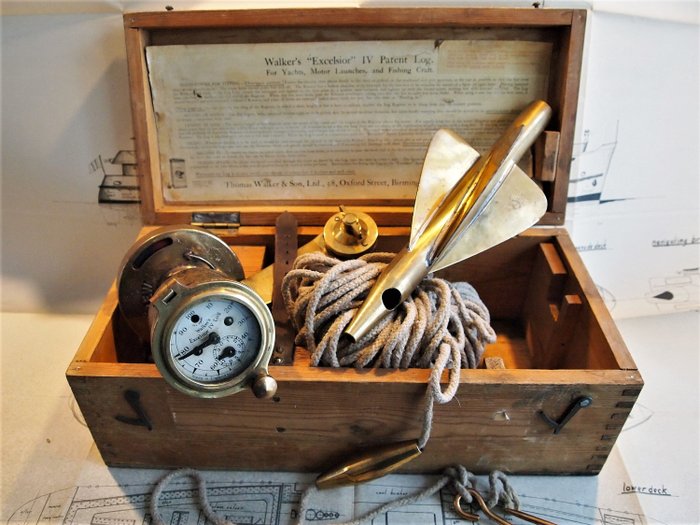
Bullauge - messing raam met foto schepen Multraship - 1970-1980
Nr. 30232219

Nr. 30232219

Antique Brass Ships Log Signed Walker’s Excelsior IV Patent Log, circa 1920s
The log recorded the number of nautical miles traveled. To this end, the fin was dragged on a line behind a ship. On the clock it was possible to see how many miles had been traveled in a certain time. Thomas Walker & Sons from Birmingham produced nautical instruments from 1861 to 1986. The first commercially successful mechanical log was patented in 1802 to Edward Massey from London. In this first design, logvin and clock were separated from each other by a line of about 1 meter and this was carried along on a longer line behind the ship. His cousin Thomas Walker (1805-1871) combined the logvin and clock in one construction: the so-called "A1 harpoon" or "frictionless" log (see also inv. No. J-076) for which he received a patent in 1861. At the end of the nineteenth century, the Massey's company merged with Thomas Walker & Sons. The "harpoon" log consisted of a bronze "rotator" or fin that was directly linked to a clock mechanism that translated the number of revolutions into a traveled distance. In later designs by Thomas Walker & Sons, among others, fin and log clock were separated again. The line, which is approximately 30 meters long, transferred the revolutions of the towed fin to a clock placed on board. One could now read the distance traveled without having to bring in the whole. Moreover, the vulnerable clock mechanism above water was exposed to fewer risks. The excelsior IV log was a small version and was, according to inscription in the lid of the box, intended for yachts, motor boats and fishing vessels.
This log comes with its wooden box, large brass spinner, rope and sinker, lines and mounting bracket .
Carefull Shipping with track/trace
So kaufen Sie auf Catawiki
1. Etwas Besonderes entdecken
2. Höchstgebot abgeben
3. Sichere Zahlung durchführen